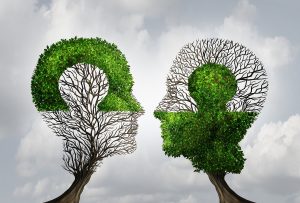
The concept of the “entourage effect” was introduced in 1998 by a group of researchers with the publication of a study in the European Journal of Pharmacology.
It has long been known in cannabis circles that different cannabis strains have different effects. For example, Indica strains have a relaxing bodily effect and Sativa strains are mentally stimulating and uplifting while hybrid strains have varying effects depending on the “parent”.
In other words, the effect is the result of different chemical compounds and the proportions between them.
The whole is more than the sum of its parts.
The researchers behind the “Entourage Effect” described and demonstrated the phenomenon that different combinations of cannabis’ active substances produced varied physiological and psychological effects than any single substance alone.
This was contrary to the prevailing scientific view that THC alone was responsible for the effects of cannabis.
Cannabis Synergy
While the two cannabionides – the psychoactive tetrahydrocannabinol (THC) and the non-psychoactive cannabidiol (CBD) – have received almost all the attention from researchers and the public, so far over 100 different cannabinoids have been identified in cannabis, such as CBC, CBN and CBG. In addition, terpenoids/terpenes and flavanoids/cannaflavins are also proven to be part of the overall equation in terms of effect.
Each cannabinoid, terpene and flavanoid, has specific biochemical effects that interact and regulate each other in complex biochemical processes interacting with the human body’s own natural cannabinoids; the so-called endocannabinoid system.
There is much we don’t yet understand about the synergistic effects of the cannabis plant, but that it exists and is important is now beyond doubt.
Botanical medicine
The researchers behind the “entourage effect” had a further important supporting point in their original study, namely that the entourage effect also explained why so-called “botanical medicines” – that is, medicines based on whole plant material – often prove far more effective than their counterparts: the pharmacologically isolated single-component medicines, such as isolated THC or CBD.
Although the latter single-molecule theory is still the cornerstone of new pharmacological cannabis product development, there is now so much evidence for natural botanical synergy that the so-called minor cannabinoids are now generally included in the overall pharmacological effect of the cannabis plant.
Scientific examples of the entourage effect
In a randomised trial for patients with severe pain where opium-based medication was ineffective, patients were given a cannabis extract of primarily THC. This proved not to have sufficient effect in terms of. placebo, but a group given an extract containing both THC and CBD was found to have statistically significant positive results far above both other groups. The only prominent difference was the introduction of CBD in the medicine.
An animal study of painkillers showed that pure CBD in small doses reduced pain to a certain point, but that larger doses did not increase effectiveness. Then, a full-spectrum cannabis extraction with equivalent CBD levels was introduced, so the observation of this “ceiling effect” completely disappeared and pain relief followed suit with the dosage.
A recent study in breast cancer (2018) showed that a cannabis extract was significantly better than a pure THC treatment. The extract contained small concentrations of CBD and THCA, which the researchers attributed to the change in the increased effect.
These studies and many others provide solid scientific evidence for the entourage effect, and underline the need for more focus on broad-spectrum cannabis medicine rather than single-component medicines.
Conclusion:
– The entourage effect is the term used to describe the synergy between the active substances of cannabis.
– The effect of cannabis is more than the sum of its individual active components.
– Cannabinoids, terpenes and flavanoids each have specific properties that modulate the entourage effect.
– Botanical medicine – that is, whole plant material – can be far more effective than medicine based on extractions of isolated single molecules.
– The entourage effect has been demonstrated and the consensus in science and pharmacology is therefore moving.









